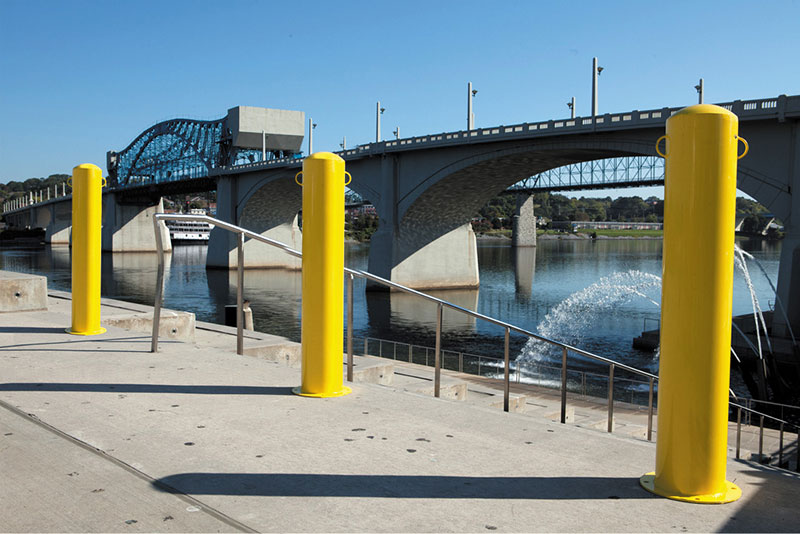- Mon-Fri 9am-4pm EST
- 888-663-4621

Bollards are seen everywhere but seldom noticed, inconspicuously blending into the sidewalks and metropolitan traffic control system. Their purpose is to either discourage vehicles from traveling somewhere or to outright stop them from charging into pedestrian-dense areas. There are three basic types of bollards with different applications, each serving more or less functional or visual purposes. While bollards occur most commonly as cylindrical poles, they can sometimes come in different shapes or designs to disguise their true purpose.
Stationary or "pipe" bollards are the standard type and occur as a row of solid vertical posts that are designed to effectively prevent a vehicle from ram-raiding into a sensitive area. Such protected areas include bicycle or walking trails, sidewalks, walk-by storefronts, front entrances for offices and sometimes front lawns for homes and businesses alike. They might be sleeved in a plastic cover for an aesthetic touch. You can usually find these in front of department stores where pedestrian loading bays are.
Mechanical types are just like their stationary brethren but can be extended or retracted through a control interface, usually a guard tower or overseer's office where camera footage regulates security as an added measure. Mechanical bollards are, as one would imagine, designed to retract for certain vehicles to make it through while extending to prevent others that aren't authorized. These are geared to selectively seal off roads that lead into restricted-access zones rather than protect pedestrians.
Flexible bollards are the most commonly seen type in many localities and typically serve to discourage vehicles from crossing a painted median on an otherwise drivable surface. They're usually bright yellow and cause minimal damage if hit, flexing back instead of steadfastly holding their placement. As such, these are only used as an inexpensive traffic director more so than a preventative tool where lives and property may be endangered by reckless drivers.
You must login to post comments.